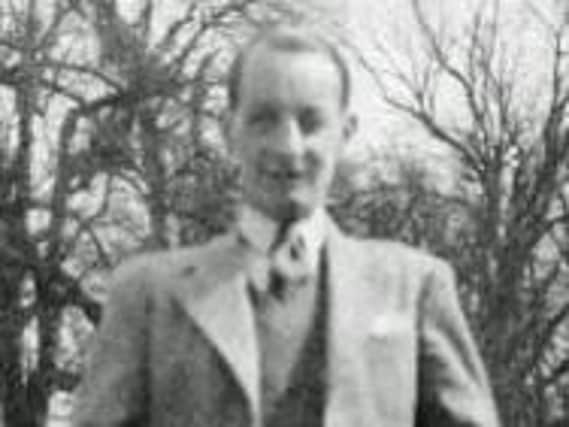Flying ace took on 30 enemy aircraft single-handedly


The Battle of Britain was fought in the skies over southern England during summer and autumn 1940.The Luftwaffe was attacking strategic targets along the coast and targeting inland RAF installations, before turning its attention with devastating effect to the City of London itself.But against all odds, the Royal Air Force held the enemy at bay and the anticipated German invasion was called off indefinitely.Although the action was fought in the skies more than 200 miles away from Lancashire, some men from the county were taking part as essential ground crew, toiling hours on end to keep our fighter aircraft in the air.However, one Chorley man was in the cockpit and in the thick of the action.Harry Walpole Charnock was born in Chorley on June 20, 1905, and after an education at Harrow, joined the RAF College at Cranwell in 1924.He graduated the following year but was cashiered by General Court Martial for low flying in December 1930.As war broke out in September 1939, Harry rejoined the RAF Volunteer Reserve.Harry flew during the Battle with 64 Squadron and suffered a crash landing during a patrol in September 1940. He was uninjured but his Spitfire K9903 was a write-off. He was then reallocated to 19 Squadron and his first aerial action came when he shot down an Me109 over Deal on November 5, by which time the Battle of Britain had technically been over for a couple of weeks.Harry was mainly engaged in fighter sweeps, before the squadron became tasked with escorting day bomber raids to the Continent. It was while carrying out escorts that he added another two victories to his score. He shot down a Me109 north of Montreuil, on July 21, 1941, and then another over Mardyck-St Omer on August 7, 1941.At the end of his tour with 19 Squadron, records strongly suggest he had notched at least one other victory, and shared in the destruction of another enemy aircraft by the first week of November 1941.He was recommended for the Distinguished Flying Medal which was duly awarded to Harry in April 1942.The citation reads: “This airman has displayed great skill and courage in air combat and has destroyed at least four enemy aircraft.“He has, on occasions, led his flight, and his high standard of morale has set an inspiring example.”In August 1942, Charnock was promoted to warrant officer and posted to 72 Squadron.He joined as the squadron was posted north to re-equip for overseas duty.At the start of November he flew with the squadron to Gibraltar, and from there to Algiers.They arrived at their new base Maison Blanche on the 16th, and were up and flying operationally the following day.On December 18, 1942, while escorting allied bombers, Harry broke away and engaged 30 enemy aircraft single handedly.He accounted for two destroyed before being hit himself.With his Spitfire in flames and himself injured by shrapnel, he crash landed in the desert.His colleagues thought he had been killed and mourned his loss.Two days later they received a telegram from Harry saying that his squadron should be credited with two enemy aeroplanes destroyed.Harry had walked 11 miles to a British encampment where he was treated for his serious head and arm wounds.Keen to get back to the thick of the action with his men, Harry fooled his medical officer into thinking he was fit to fly again. He was in fact tying his injured arm to the throttle and effectively flying single handed.Extraordinarily he accounted for another enemy shot down before his injuries proved too much and he sought further medical attention.During his recuperation back in Britain, Harry was awarded a second honour, the Distinguished Flying Cross in February 1943.It read: “Warrant Officer Charnock is a section leader of distinction who has at all times shown great keeness to engage the enemy. He has participated with much success in numerous low level attacks against enemy transports and has destroyed at least six hostile aircraft.”Eventually, Harry returned to active duty with 22 Squadron before joining 41 Squadron in Belgium.During this period he was mainly involved with bomber escorts and armed reconnaissance missions and was rewarded with two Belgian honours with the following citation:“This officer served with the Lympne Wing which included No. 350 (Belgian) Squadron from October, 1944.“In December, 1944, he proceeded to Brussels with his squadron, the Wing (125) being led by Wing Commander Donnet (Belgium).“Later the Wing moved to Diest and, during this period, Flight Lieutenant Charnock carried out a large number of Armed Reconnaissance destroying 25 trains, 40 trucks and a barge.”Although the war in Europe ended in May 1945, Harry continued to serve in RAF as a flying instructor until he relinquished his commission on January 1, 1955.Not much is known about Harry after he had left the RAF and he passed away on May 24, 1974.But what we can be absolutely sure of is that Harry was a Chorley-born hero of the Royal Air Force and his wartime service was rewarded with four honours and the admiration and plaudits of his contemporaries.